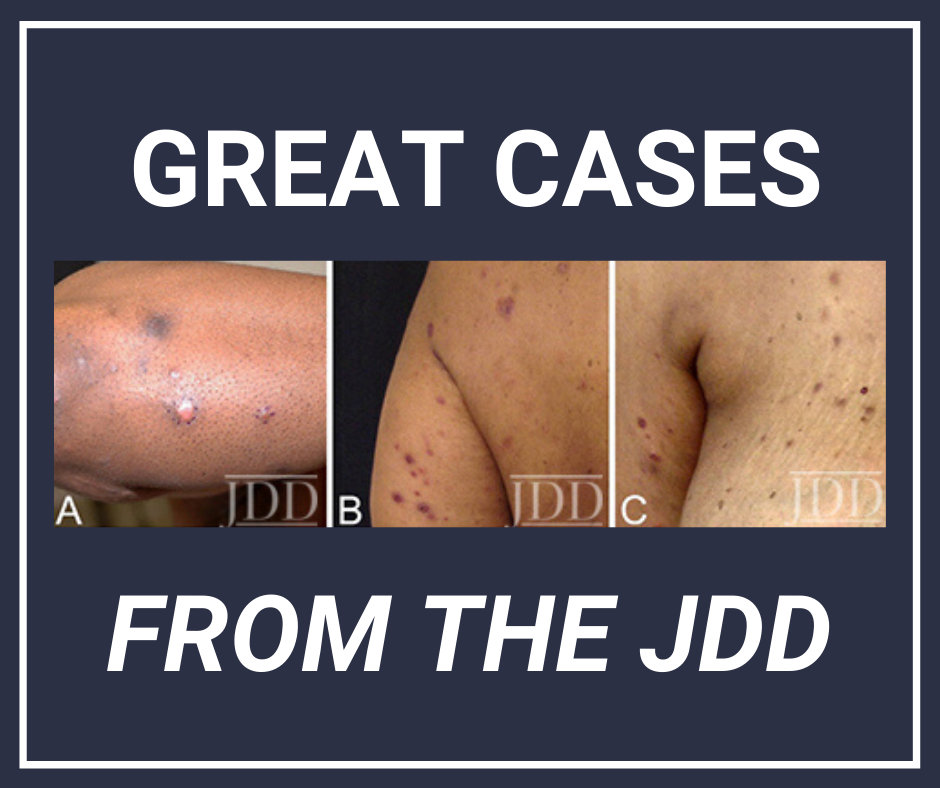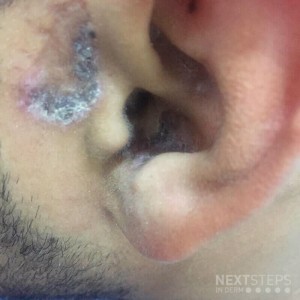Practical Dermoscopy with Sima Jain, MD
 Dermoscopy, also known as epiluminescence microscopy, epiluminoscopy or skin surface microscopy, is an important way to visualize subsurface structures in the epidermis and dermis. In a 2-part series, Dr. Sima Jain reviews the evaluation of pigmented lesions, and the different vessel morphologies and patterns along with a discussion of specific findings in select cutaneous infections.
Read part …
Dermoscopy, also known as epiluminescence microscopy, epiluminoscopy or skin surface microscopy, is an important way to visualize subsurface structures in the epidermis and dermis. In a 2-part series, Dr. Sima Jain reviews the evaluation of pigmented lesions, and the different vessel morphologies and patterns along with a discussion of specific findings in select cutaneous infections.
Read part …
 Dermoscopy, also known as epiluminescence microscopy, epiluminoscopy or skin surface microscopy, is an important way to visualize subsurface structures in the epidermis and dermis. In a 2-part series, Dr. Sima Jain reviews the evaluation of pigmented lesions, and the different vessel morphologies and patterns along with a discussion of specific findings in select cutaneous infections.
Read part …
Dermoscopy, also known as epiluminescence microscopy, epiluminoscopy or skin surface microscopy, is an important way to visualize subsurface structures in the epidermis and dermis. In a 2-part series, Dr. Sima Jain reviews the evaluation of pigmented lesions, and the different vessel morphologies and patterns along with a discussion of specific findings in select cutaneous infections.
Read part … 

 Biopsy of one of the lesions pictured reveals spindle cells forming slit-like vascular channels. Which of the following is also associated with the cause of these lesions?
A. Bacillary angiomatosis
B. Merkel cell carcinoma
C. Angiosarcoma
D. Multicentric Castleman disease
E. Nasopharyngeal carcinoma
To find out the correct answer and read the explanation, click here.
Brought t …
Biopsy of one of the lesions pictured reveals spindle cells forming slit-like vascular channels. Which of the following is also associated with the cause of these lesions?
A. Bacillary angiomatosis
B. Merkel cell carcinoma
C. Angiosarcoma
D. Multicentric Castleman disease
E. Nasopharyngeal carcinoma
To find out the correct answer and read the explanation, click here.
Brought t …  Lymphomatoid papulosis (LyP) is a CD30+ T-cell lymphoproliferative disorder (LPD) presenting as a recurrent eruption of papules and nodules which resolve spontaneously. CD30+ LPD prevalence in African American (AA)/Black patients is lower compared to White patients. CD30+ LPD has been recently reported to have worse outcomes in AA patients compared to White patients.
A retrospective chart revie …
Lymphomatoid papulosis (LyP) is a CD30+ T-cell lymphoproliferative disorder (LPD) presenting as a recurrent eruption of papules and nodules which resolve spontaneously. CD30+ LPD prevalence in African American (AA)/Black patients is lower compared to White patients. CD30+ LPD has been recently reported to have worse outcomes in AA patients compared to White patients.
A retrospective chart revie …  This month’s Patient Buzz features articles on some new or unusual methods gaining popularity. Can face workouts lift and tighten? Are there health benefits to perineum sunning? Can ingestible collagen improve the skin from the inside out?
These articles may become topics of conversation at upcoming office visits. Review the articles in this list to prepare for your patients’ questions:
…
This month’s Patient Buzz features articles on some new or unusual methods gaining popularity. Can face workouts lift and tighten? Are there health benefits to perineum sunning? Can ingestible collagen improve the skin from the inside out?
These articles may become topics of conversation at upcoming office visits. Review the articles in this list to prepare for your patients’ questions:
…  Which of the following is TRUE regarding this condition?
A. 50% of patients will eventually develop systemic involvement
B. C3 deficiency increases susceptibility to this condition
C. Biopsy typically shows a thinned basement membrane
D. Squamous cell carcinoma is a potential sequela
E. UV exposure is helpful in treatment
To find out the correct answer and read the explanation, …
Which of the following is TRUE regarding this condition?
A. 50% of patients will eventually develop systemic involvement
B. C3 deficiency increases susceptibility to this condition
C. Biopsy typically shows a thinned basement membrane
D. Squamous cell carcinoma is a potential sequela
E. UV exposure is helpful in treatment
To find out the correct answer and read the explanation, …